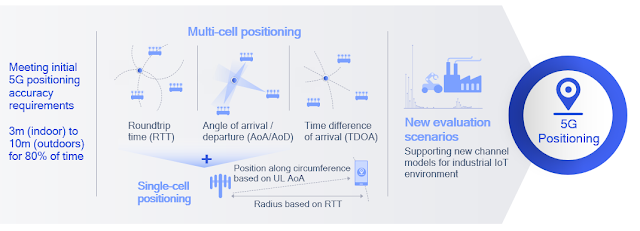I have received quite a few requests to do a 5G Network Slicing tutorial but have still not got around to doing it. Luckily there are so many public resources available that I can get away with not doing one on this topic.
Then there is also this myth about 3 slices in the network. The GSMA slice template is a good starting point for an operator looking to do network slicing in their 5G networks. The latest version is 3.0, available here.
That is 37 attributes each of which can take multiple values. The permutations are massive.
— Dr. Dan Warren (@TMGB) October 18, 2019
Alistair URIE from Nokia Bell Labs points out some common misconceptions people have with Network Slicing:
- Multiple slices may share the same cell and the same RU in each slice
- Single UE may have up to 8 active slices but must have a single CU-CP instance to terminate the common RRC
- Slicing supports more than 3 slices
Back in March, China Mobile, Huawei, Tencent, China Electric Power Research Institute, and Digital Domain have jointly released the Categories and Service Levels of Network Slice White Paper to introduce the industry’s first classification of network slice levels. The new white paper dives into the definitions, solutions, typical scenarios, and evolution that make up the five levels of network slices. It serves as an excellent reference to provide guidance in promoting and commercializing network slicing, and lays a theoretical foundation for the industry-wide application of network slicing.
The whitepaper describes the different phases as:Phase 1 (ready): As mentioned above, the 5G transport network and 5G core network support different software-based and hardware-based isolation solutions. On the 5G NR side, 5QIs (QoS scheduling mechanism) are mainly used to achieve software-based isolation in WAN scenarios. Alternatively, campus-specific 5G NR (including micro base stations and indoor distributed base stations) is used to implement hardware-based isolation in LAN scenarios. In terms of service experience assurance, 5QIs are used to implement differentiated SLA assurance between slices. In terms of slice OAM capabilities, E2E KPIs can be managed in a visualized manner. This means that from 2020 on, Huawei is ready to deliver commercial use of E2E slicing for common customers and VIP customers of the public network and common customer of general industries (such as UHD live broadcast and AR advertisement).
Phase 2 (to be ready in 2021): In terms of isolation, the 5G NR side supports the wireless RB resource reservation technology (including the static reservation and dynamic reservation modes) to implement E2E network resource isolation and slicing in WAN scenarios. In terms of service experience assurance, features such as 5G LAN and 5G TSN are enhanced to implement differentiated and deterministic SLA assurance between different slices. In terms of slice OAM, on the basis of tenant-level KPI visualization, the limited self-service of the industry for rented slices can be further supported. In this phase, operators can serve VIP customers in common industries (such as AR/VR cloud games and drone inspection), dedicated industry customers (such as electric power management information region, medical hospital campus, and industrial campus), and dedicated industry customers (such as electric power production control region and public security).
Phase 3 (to be ready after 2022): In this phase, 5G network slicing supports real dynamic closed-loop SLAs based on AI and negative feedback mechanism, implementing network self-optimization and better serving industries (such as 5G V2X) with high requirements on mobility, roaming, and service continuity. In addition, industry-oriented comprehensive service capabilities will be further enhanced and evolved.
A more technical presentation from Nokia is available here. The video below shows how innovations in IP routing and SDN work together to implement network slicing in the transport domain.
If you know some other good resources and tutorials worth sharing, add them in the comments below.
Related Posts:
- The 3G4G Blog: 5G Slicing Templates
- The 3G4G Blog: End-to-end Network Slicing in 5G
- The 3G4G Blog: AI your Slice to 5G Perfection









































